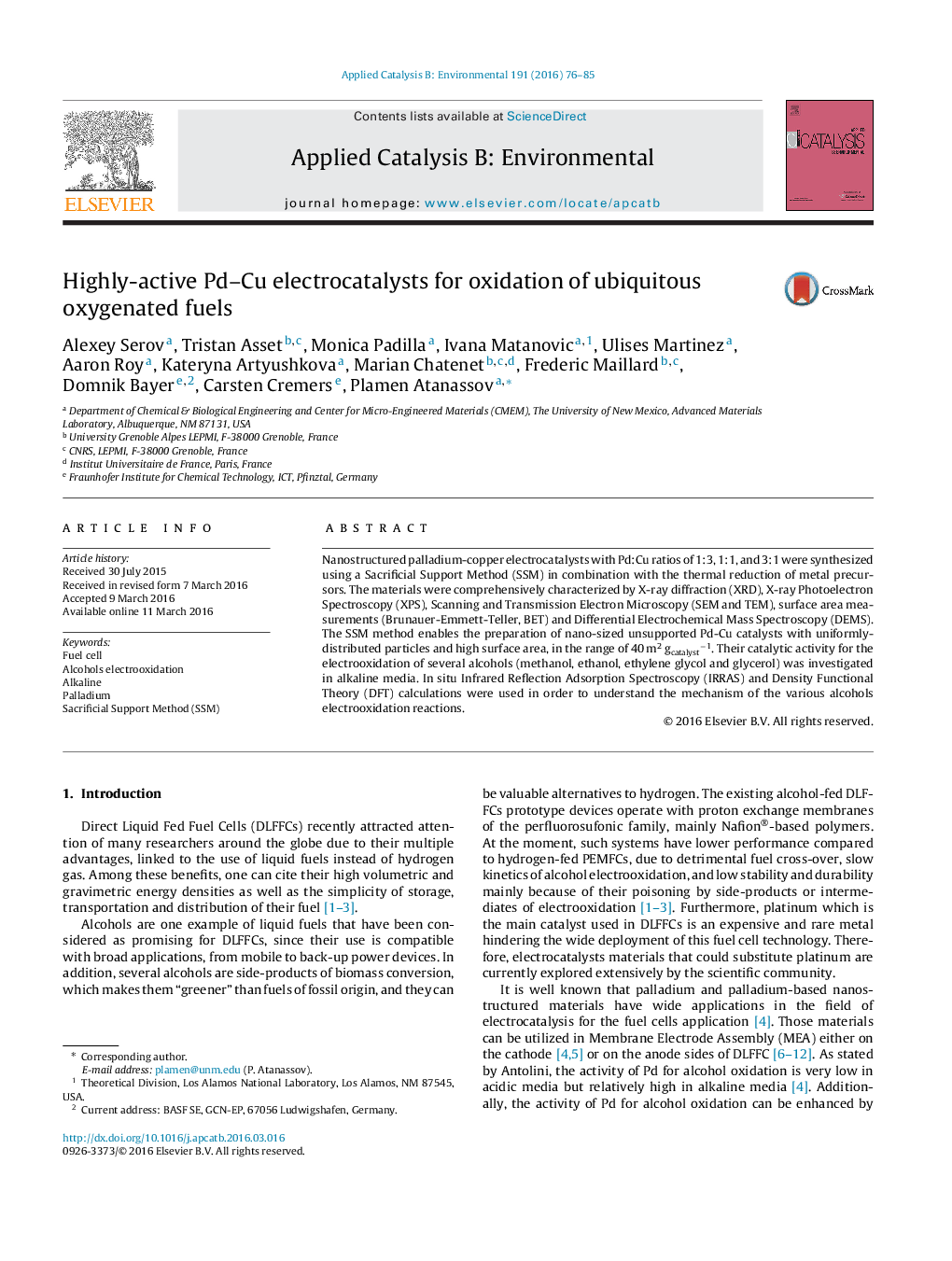| Article ID | Journal | Published Year | Pages | File Type |
|---|---|---|---|---|
| 44808 | Applied Catalysis B: Environmental | 2016 | 10 Pages |
•Highly active Pd-based electrocatalysts.•Mechanistic insight on alcohols oxidation in alkaline media.•DFT calculations of reaction pathway.•Sacrificial Support Method was used for synthesis.
Nanostructured palladium-copper electrocatalysts with Pd:Cu ratios of 1:3, 1:1, and 3:1 were synthesized using a Sacrificial Support Method (SSM) in combination with the thermal reduction of metal precursors. The materials were comprehensively characterized by X-ray diffraction (XRD), X-ray Photoelectron Spectroscopy (XPS), Scanning and Transmission Electron Microscopy (SEM and TEM), surface area measurements (Brunauer-Emmett-Teller, BET) and Differential Electrochemical Mass Spectroscopy (DEMS). The SSM method enables the preparation of nano-sized unsupported Pd-Cu catalysts with uniformly-distributed particles and high surface area, in the range of 40 m2 gcatalyst−1. Their catalytic activity for the electrooxidation of several alcohols (methanol, ethanol, ethylene glycol and glycerol) was investigated in alkaline media. In situ Infrared Reflection Adsorption Spectroscopy (IRRAS) and Density Functional Theory (DFT) calculations were used in order to understand the mechanism of the various alcohols electrooxidation reactions.
Graphical abstractA sacrificial support method (SSM) in combination with thermal reduction of metal precursors was used for the preparation of palladium-copper catalysts. The materials with Pd:Cu ratios of 1:3, 1:1 and 3:1 were synthesized and characterized via XRD, SEM, TEM, XPS, DEMS and BET techniques. The catalytic activity for the electrooxidation of methanol, ethanol, ethylene glycol and glycerol was investigated in alkaline media.Figure optionsDownload full-size imageDownload as PowerPoint slide
